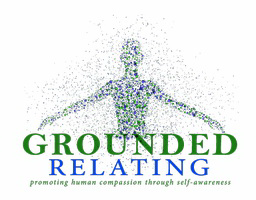Unpacking the Core Enneatypes by Center
When looking at the Enneagram three Centers of Intelligence from a certain angle, one can clearly see the argument for Core Enneatypes, with two very similar, yet distinct Enneagram variations that sit on either side of the Core Enneatypes, along the circle diagram. Said another way, each of the nine types on the Enneagram are only one kind of Center of Intelligence. There are nine Enneagram Type Numbers, and Three Centers of Intelligence. This means there are three Enneagram Type numbers, or Enneatypes, per Center of Intelligence (see chart at the bottom of this article). And only one of the three Enneatypes in a Center of Intelligence, is considered the Core Enneatypes.
All three types in a Center of Intelligence struggle with one similar thing, be it Anger, Fear or Relationship. And the Core Enneatypes are the principle or main example for each of the Centers of Intelligence. The two Enneatypes on either side of the three Core Enneatypes, struggle with the same basic pattern, but vary it distinctly from the main or Core Enneatype. All three types in a Center of Intelligence will manifest that same struggle in the world of daily living, in distinctly separate ways.
This has lead to the notion that one number in the set of three that is the Centers of Intelligecne is actually the Core Enneatype of that particular Center of Intelligence, and the other two types on either side are variations on the Core Enneatype. Enneatype Six, Three and Nine, are considered to be the Core Enneatypes, and triangulate with the Law of Three. In the Body Type Center of Intelligence, The Mediator (9) is the Core Enneatype with The Boss (8) and The Perfectionist (1) being the variations. In the Heart Type Center, The Performer (3) is the Core Enneatype with The Giver (2) and the Tragic Romantic (4) being the variations. In the Head Type Center, The Loyalist (6) is the Core Enneatype and The Observer (5) and The Epicure (7) are the variations.
How do I know which Enneagram type I am?
All of us have all nine Enneagram archetypes available to us, but one will seem more like “home base”. All of us have access to all three Centers of Intelligence, but one will feel more or most familiar. Sometimes it is easiest to start discerning the beginnings of habitual patterns from the vantage point of the three Centers of Intelligence, or from a preponderance of Head, Heart or Body Type activities, thoughts, or experiences in an individual.
How an individual perceives data in the world is only one of many ways that an individual may discern for themselves which Enneagram Type they are. A preoccupation, for example, with Intellect or Rationality or Planning, might indicate time spent in the Head Type Center of Intelligence. This could include second-guessing or being slow to commit to one thing because other things look just as inviting. Or it could look like an incessant gathering of data.
“Beautiful things about the Enneagram:
People are very dynamic by nature, and the Enneagram is well-suited to capture that dynamic status in a time-stamped way, that also allows for change and diversity, growth and illumination, as well as love and compassion for self and others. The only way the Enneagram will ever box you in, is if you do it to yourself!”
A preoccupation with Image concerns, or what other people think, might indicate time spent in the Heart Type Center of Intelligence. This could look like needing to to belong or “fit in” and be a part of something larger; or it could like having the right job or knowing the right people; or it could like always being the white knight in shining armor providing whatever is needed. This preoccupation and activity can take many forms from leadership to volunteerism to holding space.
Just “knowing” what to do, how to act, how to move in an instinctual way from deep within your body; or having a need to be very comfortable in temperature, clothing, ambience, etc.; or being able to walk into a room, and with your body, “know” the space and its inhabitants might indicate time spent in the Body Type. Another Body Type Center of Intelligence indicator could be frequently experiencing disappointment or stress as a physical ailment like a headache, a stomach ache or cold, rather than an emotion or a thought. This might be a classic example of a Body Type moving through the world, body-first.
These are only some of the ways you could discern your Enneatype. After identifying which Center of Intelligence feels like home, the new Enneagram student may start observing to see which of the three Enneatypes in the Center of Intelligence seems to fit the best. Looking at the Core Enneatypes in each Center might be helpful to make the short list of your possible type numbers. Other people find it easier to identify your own Enneagram type by having learned all nine type descriptions, and by process of elimination, discern which one fits you best. Any of the above methods for discovering your home base Enneatype are just fine, and right.
Enneagram variations on a theme of Core Enneatypes
But remember, each human individual is further varied in their presentation of Enneagram Type according to their own life and growth experiences. It’s almost like the Enneagram itself is a Core Type expression of humanity, but there are millions of variations living in the world today. Just like no two fingerprints are exactly the same, no two Enneagram Type numbers incarnated as a human being are the same! This is because each individual may be a particular Enneagram type, but with a variance in their “flavor” or personal attributes, preferences and idiosyncrasies according to what the Enneagram classifies as “wings” or “subtypes”. (These are further nuances of the Enneagram to be discussed at another time.)
Additionally, the stress or joy in a particular person’s life, at a particular time in their life, will also flavor how they inhabit a particular Enneagram Type number. People are very dynamic by nature, and the Enneagram is well-suited to capture that dynamic status in a time-stamped way, th at also allows for change and diversity, growth and illumination, as well as love and compassion for self and others. The only way the Enneagram will ever box you in, is if you do it to yourself!
Even as a particular Enneagram Type number, people are always individuals and also, so much more than their type, or their job, or their life status, or a black and white description on an internet page about an Enneagram Type number. The void can only know itself through reflection of what is and what is not. A white piece of paper is somewhat easier to comprehend from blank space, when a single black dot is put on the void of the white. This is one way to hold the universal one inside the data set that the Enneagram may illuminate for those who choose to study it. Another way is to remember that there are three Centers of Intelligence that drive us all, and then there are three Core Types, that the other six are merely variations on a theme.
Curious about the Enneagram and its Core Enneatypes?
There is plenty to read or participate in to help you learn more about the Enneagram. The following series of articles will give you a broad base understanding about the Enneagram, its history, the nine basic Enneatypes and the three Centers of Intelligence. If you are interest in more information, contact us directly using our Grounded Relating contact form. Otherwise, please enjoy the following articles:
- Enneagram historical origins remain cloaked
- Universal Enneagram symbol explains life
- What is an Enneagram of Personality symbol?
- Three Centers of Intelligence mapped by Enneagram
- Core Enneatypes and Enneagram variations (this article)
- Enneatypes: nine archetypes of the Enneagram
- Suggested books, websites and other Enneagram resources






